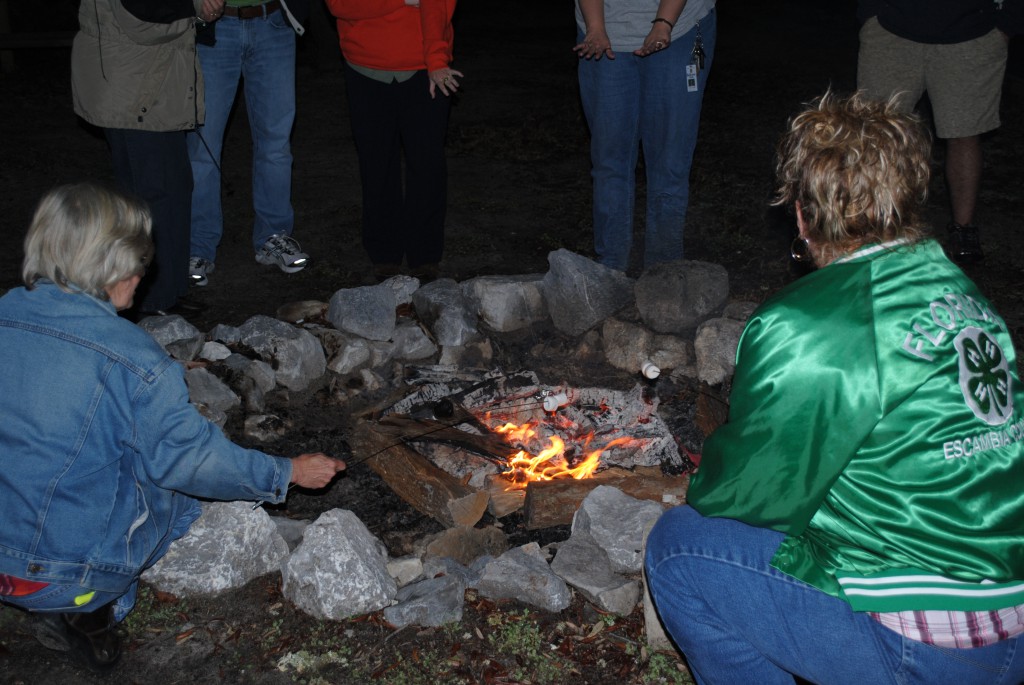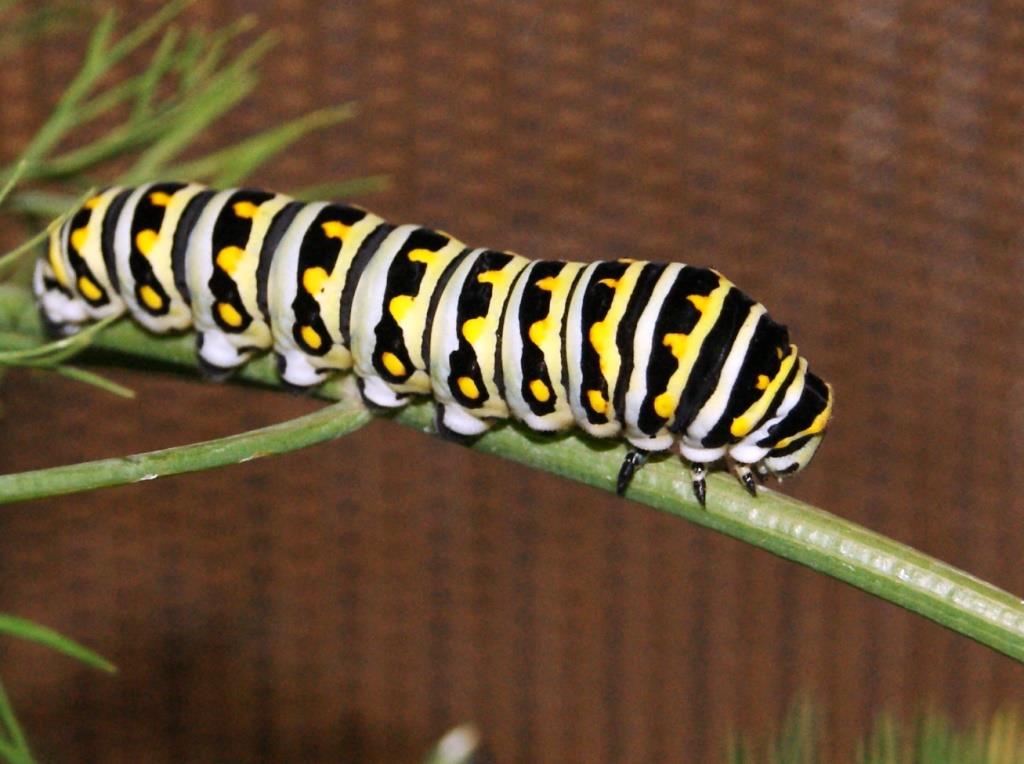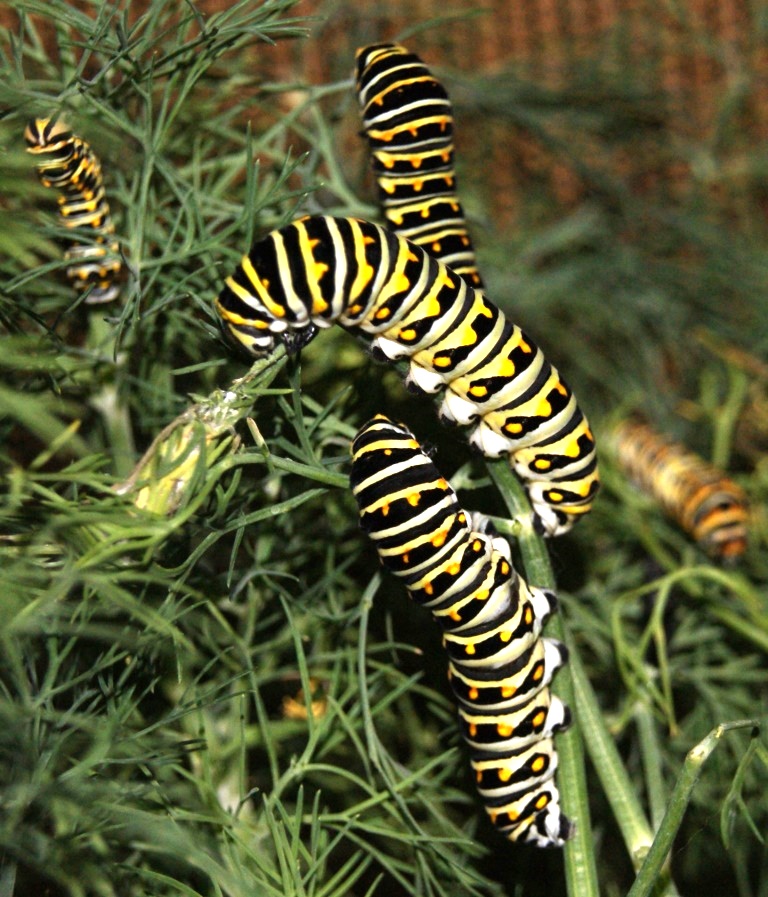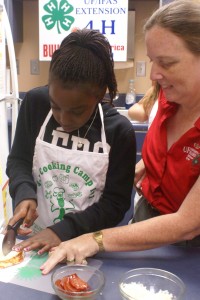by Whitney Cherry | Feb 6, 2015

Don’t let the weather ruin your club’s recreational time. Play inside!
It’s that time of year in North Florida when we’re not sure what we’ll wake up to each morning. We may be in short sleeves, sweatshirts, or hip waders and that can make planning a club meeting tough. During this time of year, between the cold and the rain, it’s seldom that our youth are allowed to go outside for PE. And in lower grades, where a gym may not be available, they are often not getting any significant amount of physical activity during the school day. This is neither good for their mental or physical health, so how can we combat the winter-blues in our club meetings? Here are a few suggestions:
Indoor relay and tag games: If space permits, move the furniture out of the way, and let the kids play freeze tag or have a relay race. Relays are often easy to relate to the educational topic of your meeting. Examples include:
- Set the table relay: where youth draw a piece of a table setting out of a paper bag, run to a table across the room, and put it in its proper place on the table. (the floor can be used in place of a table if need be.) The first team to correctly set the table wins.
- Salsa relay: youth put plastic tomatoes or peppers or onions or garlic between their knees and “run/waddle” around a cone, chair, or tape mark, at the other end of the room back to their team where they pass on their piece of food to the next team mate. The first team to have each player complete the task wins.
- Traditional balloon and ring races are always good too.
Exercise bingo: Contact your local extension office for a copy of exercise bingo. In this high intensity game, each youth or team of youth, is given a bingo card and a stack of exercise cards which face down on the floor. A teammate flips an exercise card, and each team member completes the task on the card (arm circles, pushups, jumping jacks, etc.) If their bingo card includes this exercise, the team captain marks that spot off of their card. Teammates take turn flipping exercise cards until they have Bingo. The first team to get Bingo wins.
Simon Says, Duck-Duck-Goose, London Bridge: These games require only a little space, and are still fun for younger youth, especially Cloverbuds (4-7 yrs). Simon says can often relate to your educational program as well. Ex – “Simon says comb your steer.” “Simon says, stir the batter.” “Simon says bait your hook.”
Legos, board games, etc.: It’s not very active, we know, but sometimes space just doesn’t allow for much physical activity, but it’s still important for youth to have time to interact with each other and relax. Be sure not to pick board games that may take hours to complete. Things like Charades, Guestures, Win, Lose or Draw, etc. are great options.
Now it’s your turn. Get creative, and in the comments section below, share with us the ideas you have for indoor recreation!
by Heather Kent | Jul 16, 2014

4-H Volunteers cook s ‘mores over the campfire at Camp Timpoochee
For many families, summer is synonymous with camping. Whether you are at 4-H Camp, a family camping trip, or a stay-at-home-vacation, cooking over the campfire is a fun (and yummy) activity that the whole family can enjoy. In support of the 4-H initiative for Healthy Living, we have selected 24-hours’ worth of delicious and nutritious food that your family can enjoy over your next campfire.
Breakfast Camporitos– this is a campfire version of breakfast burritos. Dice and sauté the veggies of your choice (we recommend onions, bell peppers, tomatoes, and/or potatoes). Place sautéed veggies in a bowl for later. Next, scramble your eggs. To assemble, spoon veggies and eggs onto a tortilla, then sprinkle with cheese. You can add a bit of salsa if preferred. Wrap your tortilla burrito style, then wrap the entire burrito in foil. Camporritos can be prepared and assembled in advance, and stored in a cooler until breakfast time. To serve, place the foil packets over the campfire for 5-7 minutes until the cheese is melted and the burritos are thoroughly heated through. Serve with seasonal fruit and orange juice or milk.
Campfire Calzones (for lunch or dinner)- use store-bought pizza dough or your favorite recipe. On a 2-foot section of aluminum foil, roll out a portion of pizza dough into a circle the size of a paper plate. Next, spoon on some tomato or marinara sauce, sprinkle with basil and oregano. Working on just one half of the circle, sprinkle on 1/3 cup of mozzarella cheese and add your favorite pizza toppings (we recommend pepperoni or ham, spinach, olives, and mushrooms). Fold the half of the dough without toppings over, and crimp the edges tightly, next fold over the aluminum foil, creating an envelope and crimp the foil together securely to make a foil packet. Place your packet over the grate or coals of your campfire. Bake your calzone 5-10 minutes on each side, depending on the temperature of your fire.
Campfire Veggie Dip (a tasty snack)- for this recipe, you will need a large, empty can that has been washed out. In the clean can, layer the following ingredients: Black beans, shredded cheese, salsa, fat free refried beans, and fresh cilantro. Place the can on the grate over your campfire and allow the contents to heat up. Once the cheese is melted and heated through, remove the can. Wrap the can with a festive bandana and serve the dip with carrots, bell pepper, broccoli, celery, or tomatoes.
Campfire Chili and Corn Bread in a Jar (for lunch or dinner)- in a clean mason jar, ladle a cup or two of your favorite chili. On top of the chili, place about 1/3 cup of your favorite cornbread dough (made from scratch or use a mix). You can screw on the jar lids to make the chili easier to transport. Place your jars over the campfire and allow them to back for 30-45 minutes, until a toothpick inserted into the cornbread comes out clean. By then, your chili should be thoroughly heated through. If you prefer, you can assemble this recipe in a large Dutch oven, rather than in individual jars.
Desert Campfire Cones– Stuff a waffle cone or bowl (not the regular sugar cones) with diced fresh strawberries and bananas, along with mini marshmallows, chocolate chips, or even peanut butter chips. Wrap your cone or bowl with aluminum foil, and place over the grate of the campfire. Rotate the foil packet every 1-2 minutes. After 5-7 minutes, your cone should be ready to eat. If you are camping in the fall, try a variation of this technique with diced apples and caramel sauce.
To learn more about the Florida 4-H Program and our Healthy Living Initiative, visit http://florida4h.org. If you are interested in volunteering or donating to 4-H, contact Heather Kent at hckent@ufl.edu.
by Melanie Taylor | Jul 9, 2014

4-Hers still enjoy swimming and kayaking in the Choctawhatchee Bay. Photo provided by Jackson County 4-H.
Summer is here, and for most 4-H families, that means camp is on the horizon. If this will be your child’s first summer camp experience, you and your child both may have some camp anxieties. But never fear! Here are some simple steps you can take to prepare your camper (and yourself) for camp:
Preparing Campers:
• Plan several sleep overs before the week of camp arrives. Resist the urge to pack their bags for them or to check on them while there. If they have a cell phone, have them leave it at home. This is a good way to practice not having direct or constant contact.
• Encourage them to write a letter to someone (maybe you) while at camp. You will be so excited when you receive a letter from camp! Be sure to include envelopes, addresses, stamps, paper, and a pen in their luggage.
• Gear up physically. If you have purchased new tennis shoes, break them in with a few long walks, so the blisters don’t have to happen at camp.
• Especially for teenagers, have them take a mini-vacation from their electronic devices. A couple of hours or a weekend.
• Have them write a statement for their social media pages. “Peace out Facebook, I will be at camp for the next week. Check in with you when I get back.” Or something similar.
• Have them write down their goals for camp. So they can mentally prepare themselves for what they hope to do and see.
• Make a homesick plan:
1. Homesickness isn’t entirely bad. It’s great to love your home. It’s sometimes part of the process, and it’s a confidence booster when a camper gets through it.
2. Make a happy place plan and write it down. This is an amazing opportunity to learn a life skill. Today’s youth go to technology to escape, and studies show this increases their stress. Some ideas might be: taking 10 deep breaths, traveling to a happy place in your mind, packing a certain stuffed animal, or tossing a football. They are capable of this independence.
3. Your plan should NOT be, “Give it a couple of days and if you don’t like it, we will come get you.” This will set them up to give it a couple of days and knock the confidence right out of them.
4. Let your camper know what to expect with correspondence. You don’t need to write every day, but let them know what to expect.
Parents:
• You are giving your child an incredible gift. I cannot promise you that they will not lose some socks, that they will love every meal or activity, or that they will adore every counselor. But you are preparing them for college and beyond; you are giving them the freedom to gain confidence, independence, and leadership skills; and you are instilling in them that they can do it.
• What do YOU want to do during their time at camp? Plan a vacation for a later time, time to organize, time to have one-on-one time with your other children, or some “date nights” with your spouse or friends.
• If you have apprehensions, work to resolve them. If you are worried that your camper is not going to know anyone, set up a pre-camp get-together. If you are worried about your camper’s medical needs, become friendly with the camp staff. If you are anxious about their food allergies, talk to the camp’s director. Make a camper-sick plan for yourself. Make sure there is only excitement and optimism coming from you, and share your anxiety with another adult.
• Pack self-addressed envelopes in their luggage.
• Whether they are flying or driving, refrain from crying your eyes out until they cannot see you. Take a deep breath, trust, and remind yourself that you are giving them an awesome gift.
And, what is this gift everyone is talking about? At camp, they will be part of a community all their own. They will become emotionally attached to handmade rope bracelets on their wrist, and have a song for any occasion on cue, and maybe even forget they need to shower, and think sunscreen is just a normal daily moisturizing technique. They will learn to do things on their own, and they’ll learn to rely on others. They will learn how to survive on their own for a week or two, and they’ll learn how to help each other through it.
They may even grow up on summers away from TV, and forget Facebook exists. They will relish in the joy of sleeping in cabins, swatting mosquitoes at campfire, and swimming every day. They will savor the feeling of pushing water behind them with a paddle and the whoosh of air behind the tail of an arrow as they fire. They’ll forget about appearances, relish tan lines, and recognize the beauty of a smile over anything else.
So send your kids to camp. Send them so they’ll learn to set tables and make beds and wake early. Send them so they’ll know how to be a leader, paddle a kayak, weave a bracelet, and sing as loud as they can. Send your kids to camp so they’ll learn to love themselves and learn to love others. Send your kids to camp because they’ll realize who they are, or who they want to be. And, prepare yourselves for a year of camp stories, and for a flurry of songs. Prepare to learn names of kids you’ve never met. And for your kids to have a need for sunshine, a need for campfires, and companionship. They will be forever grateful for your awesome gift of summer camp.
Source:
American Camping Association, Inc. (http://www.acacamps.org)
by Julie Pigott Dillard | Jan 4, 2014
 With the holiday season wrapping up, are you finding yourself saying things like: How did this happen? Why did I spend all that money? I can’t believe I did. Why did I wait until the last minute to shop? At least I found a great deal on that TV I’ve been eyeing. I don’t even want to think about how long it is going to take me to pay off the credit cards. I hope I didn’t take too much money out of the ATM machine. Did I buy my mom the same gift twice? I should have done this differently. I should have had a plan.
With the holiday season wrapping up, are you finding yourself saying things like: How did this happen? Why did I spend all that money? I can’t believe I did. Why did I wait until the last minute to shop? At least I found a great deal on that TV I’ve been eyeing. I don’t even want to think about how long it is going to take me to pay off the credit cards. I hope I didn’t take too much money out of the ATM machine. Did I buy my mom the same gift twice? I should have done this differently. I should have had a plan.
With 2014 here, some of us are making resolutions, others are vowing to break bad habits and some are in recovery mode from their holiday spending sprees. While we are teaching fiscal responsibility to our 4-H youth, could we use a reminder ourselves?
Birthdays, Valentine’s Day, Mother’s Day, Father’s Day, Grandparent’s Day, baby showers, wedding showers, retirements, housewarmings, and of course Christmas – it seems every month we are buying something for someone! Marketing ploys and advertising for the latest and greatest gadgets, toys, clothing and shoes target us all making it a challenge to overcome but not impossible. Focusing on the real meaning of giving and receiving should help lower stress levels and direct our paths to fiscal responsibility. Being knowledgeable about your specific situation, making informed decisions and communicating with loved ones can reduce the effects of spending stressors.
By developing a spending plan and making a budget, you can purposefully plan for gifts that come up during the year and prepare for in advance for the next holiday season.
Ask yourself:
- How much have I saved?
- How much can I save each month?
- What dollar limit can I set on gifts?
- Am I comfortable creating debt?
- Am I comfortable saying “no”?
Start with knowing how much you can spend and have a spending plan; your spending plan is critical for successful money management for not only the holidays but all year long. Surplus monies, after fixed and variable expenses, are what you should use for your gift budget. If your gift budget shows you spending more money than you have, you’ll likely take on debt. If this is the case, you should also create a plan for paying off purchases made with credit. Prioritize your purchases and consider omitting purchases that require taking on debt.
Create a list of everyone that you know you will purchase gifts for during the year including holidays. Factor in decorations, cards, postage, gift wrap, food/entertainment and travel. These are additional costs that can make a drastic impact on the gift budget.
Once you’ve researched and set your budget, you’re ready to start shopping. Remember your list and check it twice. Know for whom you’re buying, what you plan to buy, and where you’re going to buy from. Plan ahead and spread out purchases if possible. Shopping early keeps you on budget and reduces stress, and if that’s not enough, it can also keep you from buying a bad gift. The sky’s the limit and creativity is key for saving on gift giving and all the extras. Take advantage of coupons, special offers and/or extended hours BUT always be prepared to walk away. Be willing to prioritize and make necessary changes to your spending plan. Don’t forget…your name is not on your list. If you see something you like, write it down and suggest or hint it to someone else.
If you have a large family, start by thinking outside the box. Consider a gift exchange by drawing names from a hat. While many families do this during the holidays, you can apply it for birthday gifts as well. This method allows you to put more thought than money into selecting a single gift. Thoughtful and often times more creative gifts can come from shopping with local businesses. Locally grown fruit and vegetables, honey or an item from a local artist are just a few suggestions of local products. Another idea is to donate to charity in someone’s name instead of gift giving. You could also give a “gift of time.” By creating a coupon book or certificate, you can give loved one a gift such as a specific chore, a trip to the park, babysitting or a slumber party for the kids. If you are feeling crafty, you could make and give arrangements like centerpieces and decorations. For the holiday season, consider purchasing a single gift for an entire family — perhaps an entertainment basket filled with DVDs and microwave popcorn.
This should go without saying, but use cash and/or debit cards when at all possible. Money coming directly out of your pocket will likely make you think harder about your purchase. If you are going to use a credit card, make sure you have a plan in place to pay it off when the bill is due. You also need to understand the allure of paying with credit. When you’re not paying with “real” money, but are instead charging your purchases, your buying can easily get out of control, and the shopping process may not seem as painful in that moment. That’s why those buy-now-pay-later campaigns are so successful. Be careful; paying with credit (unless you pay off the purchase when the bill is due) means it could cost you more (interest), not less. Record what you actually spent next to the estimated cost on your spending plan. Make necessary adjustments and remember to communicate your plan to loved ones. Special occasions are about spending time with family and loved ones. Don’t let the gifts become the main focus and risk busting your budget.
Authors
Julie Pigott Dillard, CED & 4-H Youth Development Agent, Washington County
Ricki McWilliams, Family & Consumer Science Agent, Walton County
by Julie Pigott Dillard | Nov 8, 2013
All of you 4-H members with fall herb gardens: Would you be willing to sacrifice your apiaceous herbs to the Black Swallowtail Caterpillar?

Busily devouring dill and fennel, the lime green, black striped caterpillars in the UF IFAS Extension Washington County Office have quickly become a popular attraction. It is fortunate that the South’s climate is warm enough to allow for three generations of this species every year.

Soon, the caterpillars of the Black Swallowtail (Papilio polyxenes asterius ) butterfly species will continue their pupae stage by forming a chrysalis and emerging as one of Florida’s most recognized swallowtail butterflies.
The chrysalis is formed by two glands located inside the caterpillar that secrete silk. The silk threads stick together and harden when exposed to fresh air. The hard, protective coating is usually camouflaged from predators and blends in with the environment. Inside the chrysalis, the process of metamorphosis continues as the adult structure forms while the juvenile structure breaks down. The insects are very inactive during this time as they grow and change. This stage can last from two weeks to an entire season in temperate climates and tropical dry seasons. When hormones indicate it’s ready, the butterfly emerges by splitting the chrysalis open either biting its way out or using spit to soften the ends.

The Black swallowtail has quite a heavy appetite for such a small creature. They eat a variety of plants in the carrot family (Apiaceae) such as dill, fennel, parsley, celery, and carrot leaf. In addition to these cultivated species, they will feast on mock bishopweed, roughfruit scaleseed, spotted water hemlock, water cowbane, and wedgeleaf eryngo. They have also been known to enjoy Common Rue (Ruta graveolens L.).
They exhibit several interesting behaviors throughout their life cycle. For example, when they feel threatened the Black Swallowtail will exhibit yellow antennae-like structures called osmeterium. These flare out and emit a foul odor, like rotten cheese, if one’s finger gets too close.
Even though they are voracious plant eaters and honorable defenders of their territory, butterflies play a vital role in agriculture by pollinating crops and flowers. They’re an indicator of a healthy ecosystem; an abundance and diversity of butterfly species illustrate the overall health of an area. With their acute sensitivity to contaminants and toxins, butterfly populations will not be found in polluted areas. Recognized for their beauty, butterfly watching has also become a popular hobby and pastime.

- Photo courtesy of Donald Hall, University of Florida.
It’s never too early to think about planning a butterfly garden. For more information on creating a backyard butterfly habitat, download this 4-H fact sheet for kids and parents. For more information on this specific butterfly, visit the UF IFAS EDIS website for a publication on the Eastern Black Swallwtail.
Additional Content by:
Matthew Orwat, Extension Faculty I, Horticulture, UF IFAS Extension Washington County
by pmdavis | Aug 2, 2013
 4-H and Foods, sounds pretty yummy to me! In fact cooking projects are a great example of how youth learn about foods by partnering with adults in the kitchen to plan and prepare them. Most 4-H cooking projects explore the science, nutrition and history of cooking while promoting healthy eating and resource management.
4-H and Foods, sounds pretty yummy to me! In fact cooking projects are a great example of how youth learn about foods by partnering with adults in the kitchen to plan and prepare them. Most 4-H cooking projects explore the science, nutrition and history of cooking while promoting healthy eating and resource management.
As an adult partner you will help youth learn how to select, prepare and store food items. You can help them explore the many methods of cooking, which include roasting, stir frying, grilling, barbecuing, smoking, boiling, steaming, braising and microwaving. The USDA’s MyPlate (http://www.choosemyplate.gov/) can help you to plan meals and make balanced food choices.
Remember when cooking with kids safety is first. Have supervision. Never allow youth to cook without asking for permission. Remind youth that clean is good! Keep hands and surfaces clean, if the children you work with have long hair be sure to tie it up. Also be sure that they do not have loose clothing that can catch on fire. Help youth identify and know how to safely use common tools in the kitchen including knives and other sharp objects, hot items such as broiler, toaster, stove or microwave and teach them measuring methods. Remind youth to keep hot foods hot and cold foods cold. We certainly don’t want any of those food borne illnesses coming our way.
Help youth read the directions and follow the recipes. They should check to be sure that they have all of their ingredients before beginning their cooking project. If the project requires cutting skills start simple with something soft like a banana and a plastic knife. Demonstrate the technique then have them try the actions. Teach them the following rules for working with knives.
-

Paula and Nakobie cutting tortilla
Cut with caution.
- Focus on one task at a time.
- Never point a knife at a person.
- Always hold knife by handle.
- Use a cutting board.
- Go Slow. Take your time to learn how to cut. Beginners can start with sturdy plastic knives.
Remember to demonstrate how to wash produce and handle meat safely so you do not have cross contamination of foods. Help youth find what it is about cooking that excites them! There are recipes for snacks, side dishes, main dishes, quick breads and desserts that are great starters for youth cooking. Great projects to start with are the national 4-H Foods Curricula, or Florida Department of Agriculture Xtreme Cuisine, Nebraska 4-H has some easy kid friendly recipes or see the handout made by Bay County Extension about kid friendly foods.










